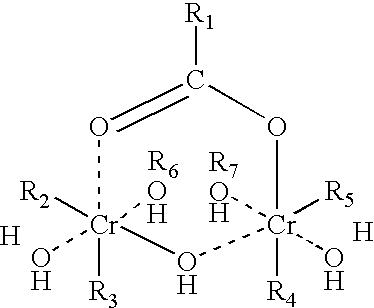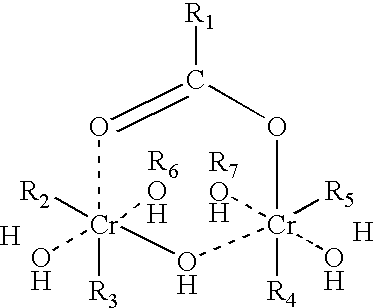Wood surface inkjet receptor medium and method of making and using same
a technology of inkjet receptor and wood surface, which is applied in the field of wood surface, can solve the problems of unduly affecting the natural wood surface of the coating, the inkjet exposure to the environment can place additional demands on the media and ink, etc., and achieves the effect of more durable inkjet receptor
- Summary
- Abstract
- Description
- Claims
- Application Information
AI Technical Summary
Benefits of technology
Problems solved by technology
Method used
Image
Examples
Embodiment Construction
[0035] Wood Surface
[0036] The present invention uses a natural wood surface to become an inkjet receptor medium. Wood surface includes without limitation veneers, plywoods, particle boards, and other products having at least one natural wood surface. These natural wood surfaces are distinguished from reconstituted cellulosic surfaces such as paper, because the original surface is desired for its natural, cellulosic fibrous wood characteristics. In that respect, the natural wood is unreconstituted cellulose fibers forming a natural texture and grain. While veneers are presently preferred because of their ability to move through conventional inkjet printers, as such inkjet printers continue to evolve, the use of other wood surfaces becomes more feasible, depending on ultimate usage of an image graphic on a wood surface.
[0037] For purposes of clarification, not limitation, the following wood products terms are defined by those skilled in the art, as published on the Internet at http: / / ...
PUM
| Property | Measurement | Unit |
|---|---|---|
| temperature | aaaaa | aaaaa |
| hydrophobic | aaaaa | aaaaa |
| chemical structure | aaaaa | aaaaa |
Abstract
Description
Claims
Application Information
 Login to View More
Login to View More - R&D
- Intellectual Property
- Life Sciences
- Materials
- Tech Scout
- Unparalleled Data Quality
- Higher Quality Content
- 60% Fewer Hallucinations
Browse by: Latest US Patents, China's latest patents, Technical Efficacy Thesaurus, Application Domain, Technology Topic, Popular Technical Reports.
© 2025 PatSnap. All rights reserved.Legal|Privacy policy|Modern Slavery Act Transparency Statement|Sitemap|About US| Contact US: help@patsnap.com



